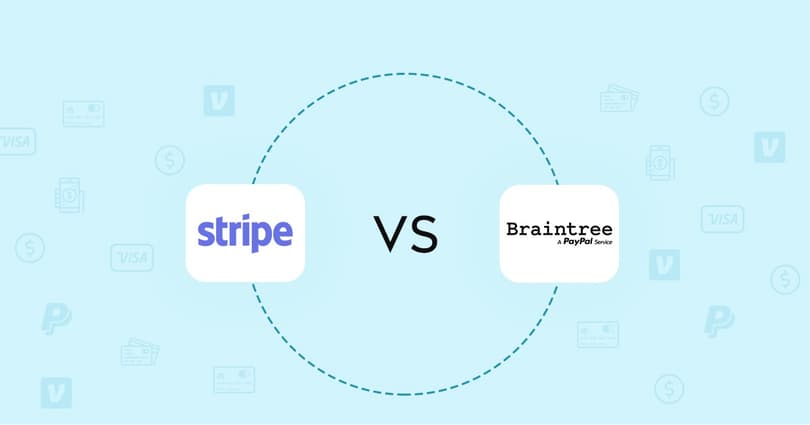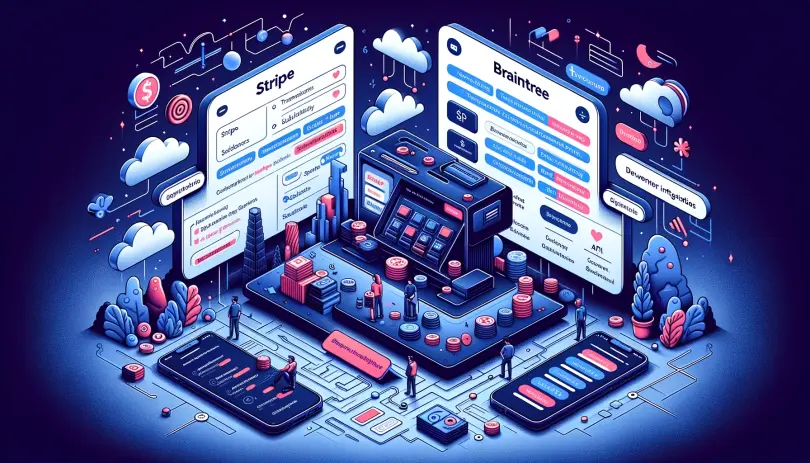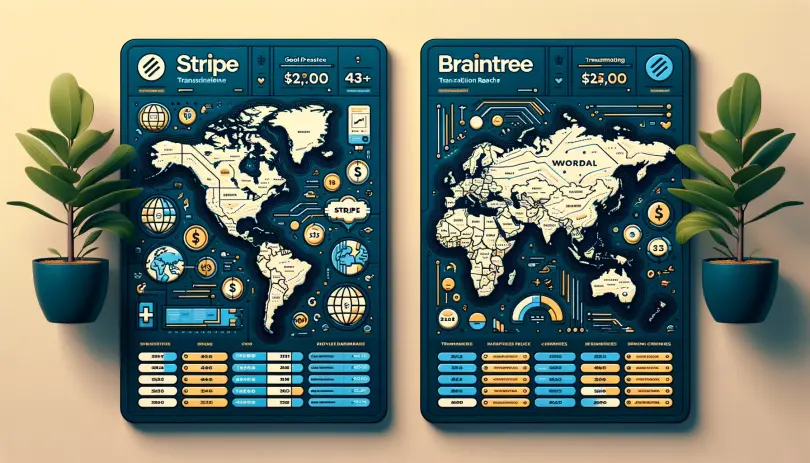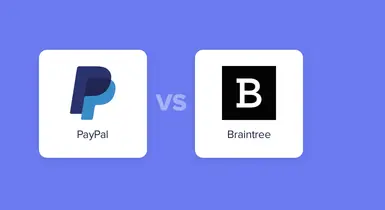Stripe vs Braintree: Key Differences

A user-friendly payment processor is a must for any modern business that wishes to stay competitive. Ensuring a high level of convenience for customers is the only way to make them come back for more. Among the payment gateways, Stripe and Braintree stand out with a wide range of features, security, and reasonable pricing, making them the most popular providers on the market.
Are you confused about whether Stripe or Braintree is the right option for you? In this guide, we will compare their fees, pricing models, and key features to help you make the best decision.
Stripe vs Braintree: Pricing
One way or another, pricing and transaction costs are the first things you’ll check when looking for a payment processor. Cost-effectiveness is the main priority for startups and small companies, as they must get the ability to accept online payments without draining their limited budget. Bigger enterprises, on the other hand, benefit from custom pricing plans to save on costs in the long run and maintain scalability. Where do Stripe and Braintree stand in this regard?

Pricing Models
When it comes to pricing, the two companies have a lot in common yet still come up with some unique features. They both rely on a flat-rate approach, with exclusive interchange-plus pricing schemes for high-volume businesses. This way, Braintree and Stripe offer enough flexibility to cover a diverse customer base.
Fees
Neither company charges monthly fees or has minimum payment limits. Their standard rates match stride for stride as well. While Braintree charges 2.59% + $0.49 per transaction, Stripe’s fee is 2.9% + $0.3. Both charge 1% for international payments. Similarly, Stripe and Braintree process recurring with ACH debit, credit, or wire transfers, accruing 0.8% and 0.75% accordingly, with a maximum cap of $5 per operation.
Services
Whether you prefer Braintree or Stripe, both services can process card payments from debit and credit cards issued by American Express, Mastercard, Visa, JCB, and Discover. The same is true for the most popular digital wallets, such as Apple Pay or Google Pay. Yet, being one of PayPal’s main competitors in the industry, Stripe doesn’t process Venmo and PayPal payments, while Braintree, a PayPal subsidiary, does.
An aspect that sets Stripe apart, though, is an invoicing service. Stripe can function as a full-scale invoicing platform, allowing users to issue invoices for their customers and make payment arrangements. Though Braintree also has invoicing, it relies on partner integrations to provide this service, making the feature not as comprehensive and complete as Stripe’s.
Pricing Aspect | Braintree | Stripe |
|---|---|---|
Fee per standard card or wallet transaction | 2.59% + $0.49 | 2.9% +$0.30 |
ACH | 0.8% capped at $5 | 0.75% capped at $5 |
International cards | 1% | 1% |
Hardware cost | No hardware available | Card reader — $59 POS terminal — $249 |
Invoicing | Third-party integrations | 0.4% per paid invoice |
Braintree vs Stripe: Key Features
At a glance, Stripe seems to be a more popular name in the industry. With 660,000 websites served worldwide, it has a 20% market share and is second only to PayPal. With 25,000 of the top online services and e-commerce stores in its portfolio, Braintree is a less powerful market player. Yet, we shouldn't forget that as a PayPal subsidiary, Braintree provides its users with full access to the ecosystem of the largest global payment service.
The biggest difference between the payment systems is that Braintree offers dedicated merchant accounts, which benefits high-volume sellers. Stripe, on the other hand, is rather an aggregator combining merchants to process transactions.
Usability
Stripe and Braintree alike boast user-friendly interfaces and developer-friendly APIs, making them useful for startups and businesses of any size or nature. Stripe delivers detailed documentation and a straightforward dashboard that allows users to efficiently manage transactions, subscriptions, and customer data.

Braintree, on the other hand, focuses on providing a smooth checkout experience. It offers customizable payment forms and supports various programming languages, making it easier for businesses to tailor the payment system to their brand.
Security
Both platforms have excellent security measures, offering solid authentication and data protection, encrypted transactions, and compliance with PCI DSS standards. Besides, both have dedicated fraud detection tools, enabling businesses to prevent scams, unauthorized access, and cut down suspicious activities.
Brand Reach
Stripe serves 46 countries and processes transactions in 135+ currencies, while Braintree serves 45 countries/regions and accepts payments in 130+ currencies.

Final Thought
While Stripe still has an edge over Braintree in functionality and overall reach, both services have a lot to offer. Though less powerful and popular, Braintree is a good choice for ambitious online businesses that need a well-set individual merchant account. So, when choosing between these two, the deciding factor is your business position, plans, and objectives.




